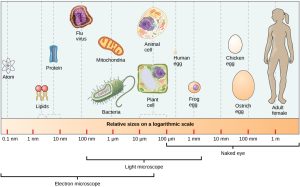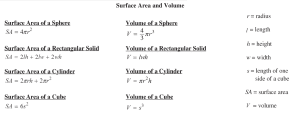The Importance of Cell Size: A Detailed Overview
In the world of biology, understanding cell size is crucial for appreciating how life functions on a microscopic level. From unicellular organisms to the vast networks of cells that make up multicellular organisms, cell size plays a significant role in the overall efficiency of biological processes. Let’s dive into why cells maintain their small size and how this contributes to their essential functions.

Why Are Cells So Small?
Cells are incredibly tiny, and there is a very good reason for that. A cell’s size is directly related to its ability to efficiently transfer nutrients and eliminate waste. To be efficient, cells need to maintain a balance between their surface area and volume.
Imagine a tiny cell with a large surface area relative to its volume. This high surface area-to-volume (SA/V) ratio allows the cell to maximize its nutrient absorption and waste excretion. When a cell grows larger, however, its volume increases at a much faster rate than its surface area. This means that if a cell becomes too large, its surface area becomes insufficient to accommodate the increased need for nutrients and waste exchange. As a result, the cell may struggle to stay alive and perform its functions effectively.
Maintaining a smaller size allows cells to have a high SA/V ratio, which is critical for efficient nutrient absorption, temperature regulation, and waste removal. This concept is highly emphasized by educational bodies, including the AP Biology curriculum, as it underpins many biological processes.
The Science Behind Surface Area to Volume Ratio
The surface area-to-volume ratio is the secret to efficient cellular function. Cells need a high SA/V ratio for multiple reasons:
Efficient Diffusion: The higher the surface area relative to volume, the easier it is for the cell to facilitate diffusion of gases, nutrients, and waste.
Temperature Regulation: A high SA/V ratio enables better heat exchange, which is especially important for cells in fluctuating environments.
Increased Efficiency of Biochemical Reactions: Most cellular reactions occur near the cell membrane. Having a high SA/V ratio means that a larger proportion of the cell’s content is close to the membrane, optimizing reactions such as ATP synthesis.

The equation to determine the SA/V ratio is straightforward and a key aspect of understanding cell biology. It is also found on the Equation Sheet provided during AP exams, highlighting its importance in evaluating cell structure and function.
Visualizing Cell Size and SA/V Ratio
The relationship between surface area and volume is critical to understanding why most cells remain small. For example, mitochondria and chloroplasts—organelles responsible for energy production—demonstrate how a high surface area is essential for efficient biochemical reactions.
The mitochondria have many folds called cristae that increase their surface area, thereby providing more space for ATP synthesis via the Electron Transport Chain. Similarly, chloroplasts have stacked thylakoids that enhance the efficiency of light absorption for photosynthesis. In both cases, a higher surface area means more efficiency in energy conversion, which is crucial for cell survival.
Why Cells Divide
When cells grow to a size where their SA/V ratio becomes too low, they face a significant challenge: they can no longer efficiently meet their metabolic demands. To resolve this, cells undergo cell division to restore a favorable SA/V ratio. By dividing, a cell can ensure that each daughter cell is small enough to efficiently transport materials across the membrane. This division process is vital for growth, repair, and even reproduction in some organisms.
Practical Applications of Surface Area in Biology
In biology, the concept of maximizing surface area isn’t just limited to cells. The structure of many organs and tissues is designed to optimize surface area for specific functions. For example:
Alveoli in Lungs: Alveoli are tiny air sacs in the lungs that maximize the surface area for gas exchange, allowing for efficient oxygen absorption and carbon dioxide release.
Root Hairs in Plants: Plants have tiny root hairs that increase the root’s surface area, improving nutrient and water absorption from the soil.
Microvilli in the Small Intestine: The cells lining the small intestine have small projections called microvilli, which greatly increase their surface area for nutrient absorption.
These examples illustrate how maximizing surface area is a universal principle in biological systems, contributing to the efficient performance of essential functions.
Conclusion: The Significance of Cell Size
Cell size plays a critical role in how efficiently a cell can function. By maintaining a small size, cells ensure they have a high SA/V ratio, which allows them to optimize nutrient uptake, waste elimination, and biochemical reactions. This is fundamental to the survival of individual cells and, ultimately, the entire organism.
Cells also demonstrate an intricate balance between surface area and volume, constantly adapting and dividing to maintain optimal conditions. This concept not only explains why cells remain small but also sheds light on how tissues, organs, and entire organisms are structured to perform their functions in the most effective manner.
For more detailed biology concepts and insights, keep exploring the learning resources at Slyacademy.com.
Frequently Asked Question
How does increasing cell size affect its surface area-to-volume ratio?
As the cell size increases, the surface area-to-volume ratio decreases. This means that the cell’s efficiency in transporting nutrients and waste decreases, ultimately leading to the cell needing to divide or adapt structurally to survive.








